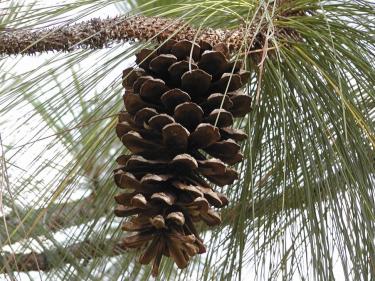Regrowing Longleaf Pines
The loss of longleaf pines has taken a significant economic and environmental toll on the woodlands of the South, and it will continue unless landowners step in to help. That’s why many landowners are now working hard to bring them back, planting and managing the trees in places where they once grew.
If you’d like to help restore longleaf pines your local forester can help you identify suitable sites, the appropriate tree planting strategy for your land to ensure longleaf trees get established in your woods. Here’s what you need to know:
Picking your site. Longleaf pines grow well in a variety of soils, from excessively drained sands to poorly drained clays, as long as the site receives ample sunlight, sufficient rainfall, and mild winters. Cutover forest land makes an ideal planting site, especially if it has been burned periodically. Longleaf pines often don’t do well in agricultural fields and pastures, because high fertility or competition from pasture grasses and agricultural weeds can make it hard for the trees to get established.
Preparing your site. Longleaf pines are very sensitive to shade and competition from other vegetation, so controlling competing growth is essential. A prescribed burn is usually recommended, along with herbicide applications both before and after planting. If you’re working with a former agricultural field or pasture, you’ll need to take a few additional steps to prepare your site. Scalping (a mechanical process that peels back the soil in a wide, shallow furrow) and then ripping the soil to fracture any hardpan that has formed can help prepare the site for planting.
Choosing your trees. It’s best to plant healthy, high-quality seedlings grown from a local seed source. These seedlings will be available to you in two forms: “bareroot” or “containerized.”
- Bareroot seedlings are exactly what they sound like—seedlings with minimal soil attached to their roots. Because their roots are exposed and easily damaged, bareroot seedlings are more stressed and have a lower survival rate. They also have a shorter viable storage time and planting window. However, they are less expensive, easier to handle in bulk, and more tolerant of deeper planting.
- Containerized seedlings are grown in individual containers that hold the soil mass and roots together, and are sold this way for planting. Because their roots are kept intact and undisturbed until planting, these seedlings are less stressed, and they tend to survive better, store for longer, and move more quickly through the grass stage once they’re planted. These seedlings are somewhat less tolerant of deep planting, but their main drawback is the
irgreater cost.
Whether you choose bareroot or containerized seedlings, they must be properly handled and cared for before planting for best results. Don’t let the roots dry out, and protect the seedlings from wind and heat before planting. Store them in a cool, well-ventilated area, and plant them as soon as you can.
Planting your trees. Plant your seedlings between November and the beginning of March, while temperatures are still cool and the soil is moist. Avoid planting during dry weather, in dry or frozen soil, during hot weather or in high winds. A forester can show you the best way to plant longleaf seedlings, whether you are working with containerized seedlings or bareroot seedlings. If you’re planting bareroot seedlings, planting deeply is desirable. Bareroot seedlings can be hand-planted, but machine-planting is recommended. Your planting density will depend on what your objectives. If you’d like to grow longleaf for wildlife, then you’d want 450-550 trees per acre. For timber, you’d want 600-700 trees per acre.
Caring for your pines. Closely control competing vegetation for the first two years after planting, as longleaf pines are easily crowded out. This is best done with herbicides early on, as seedlings less than a year old are vulnerable to fire. Once your seedlings become established, you can care for and protect them with the same cycles of fire and thinning you use in more mature stands.
It’s a common misconception that longleaf pines are hard to establish and slow to grow. But if you carefully prepare your planting site and properly tend to your longleaf pines, they will grow successfully—and can provide you with significant economic opportunities in the long run.
How can I get more tips?
It’s simple! Enter your email below.

